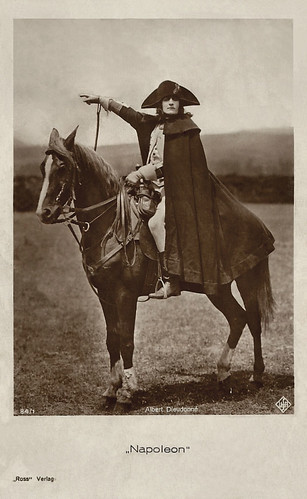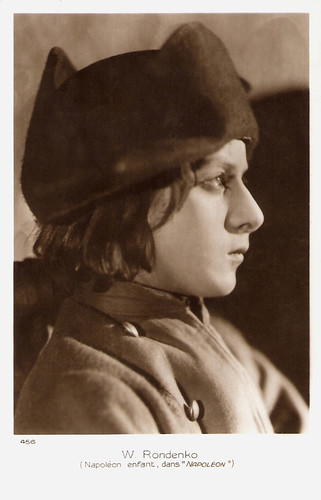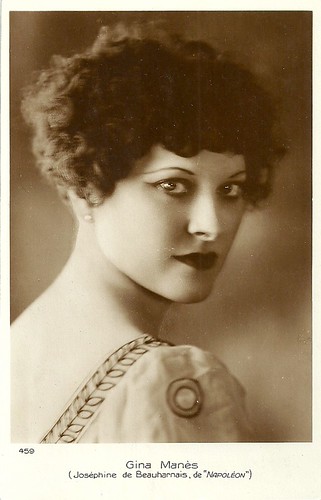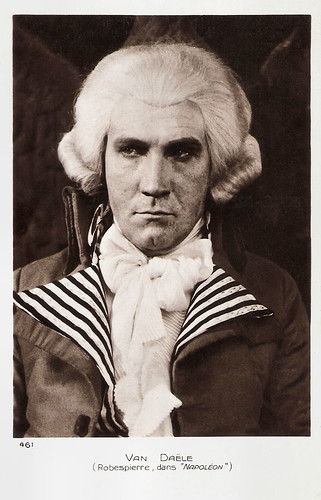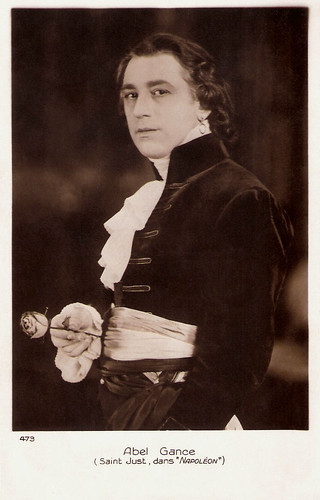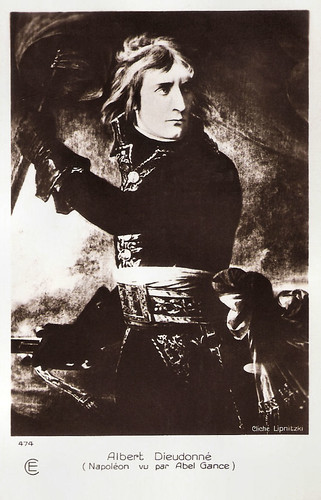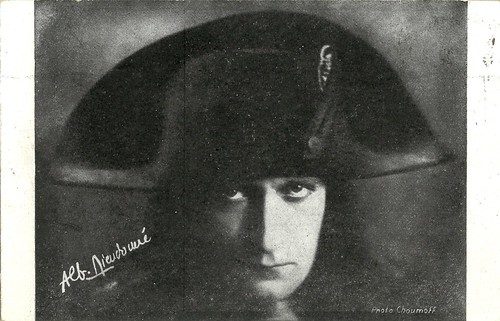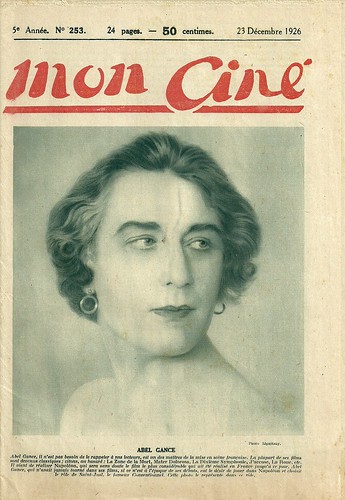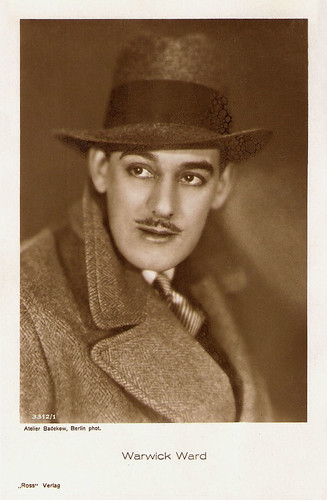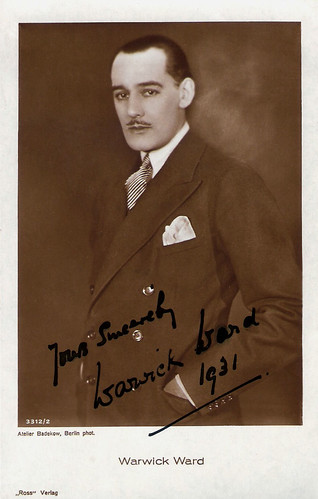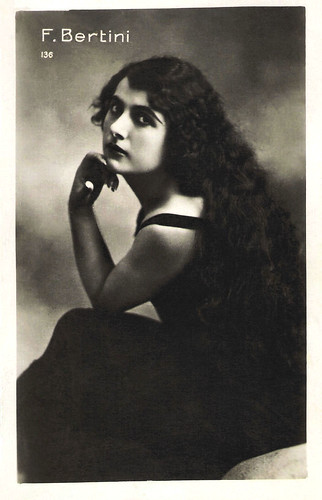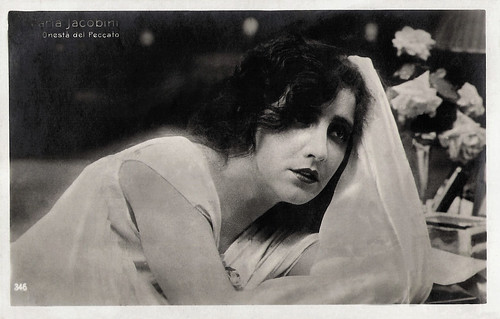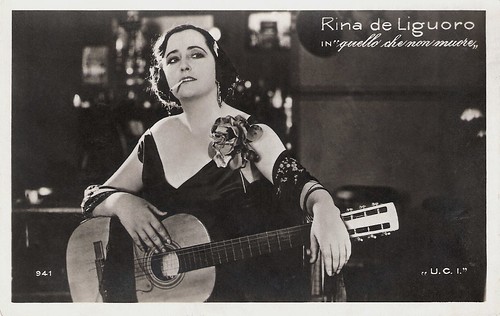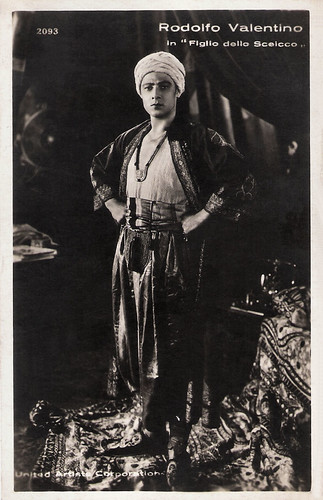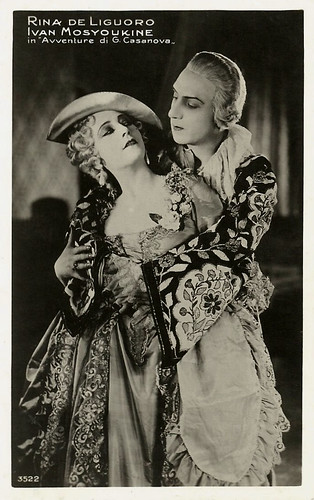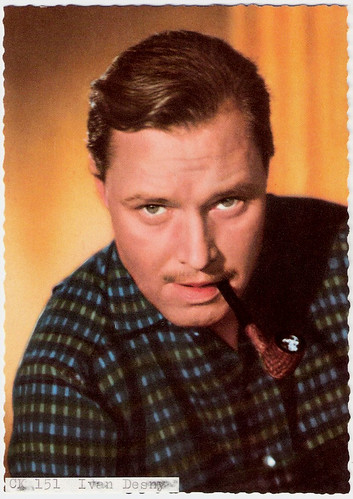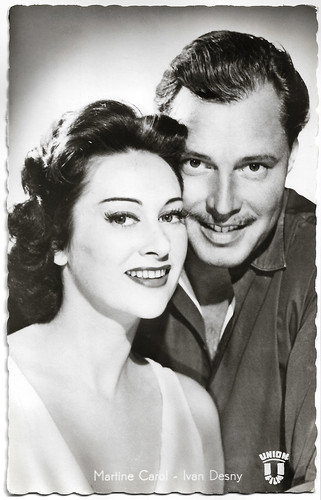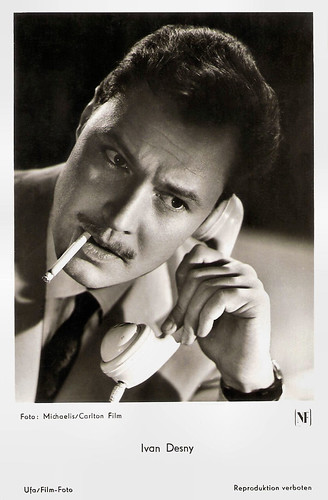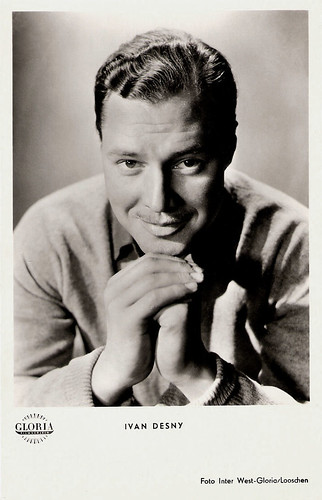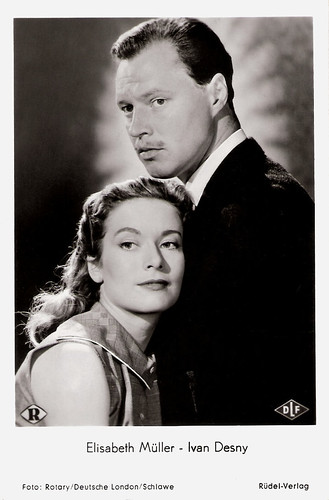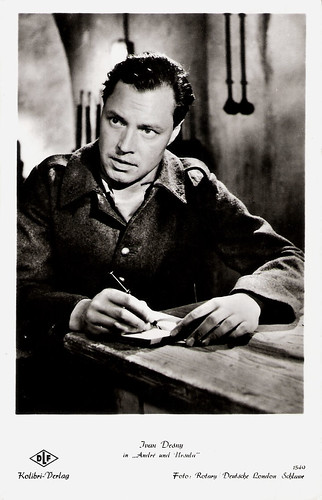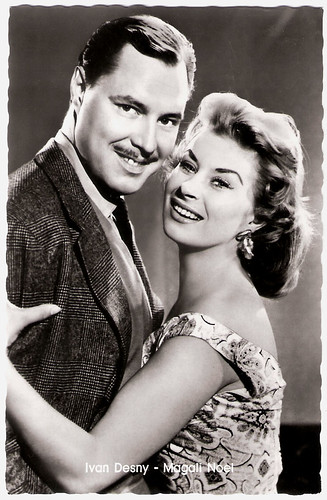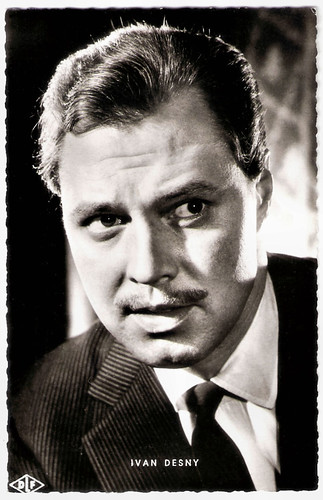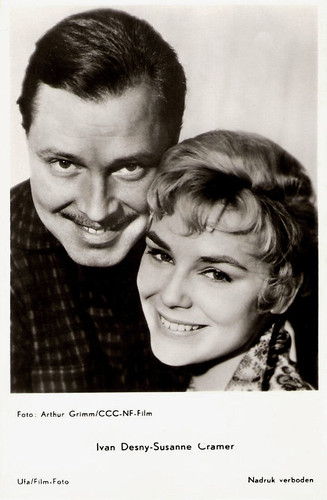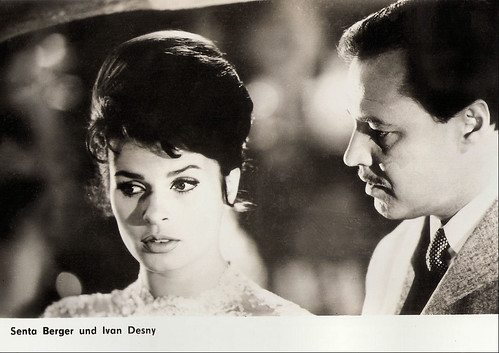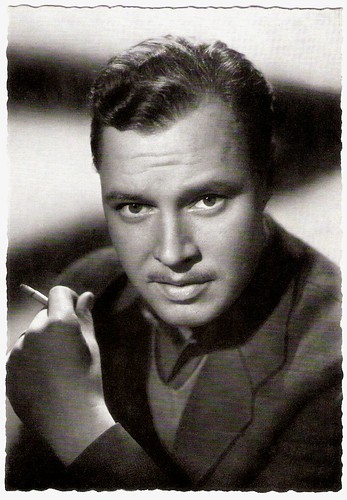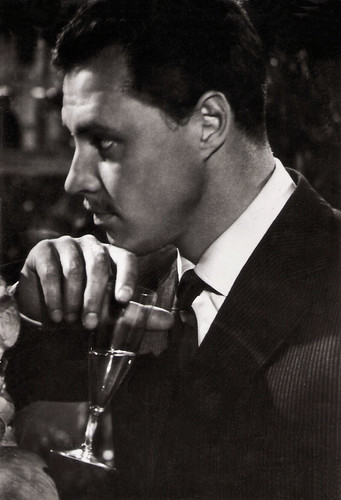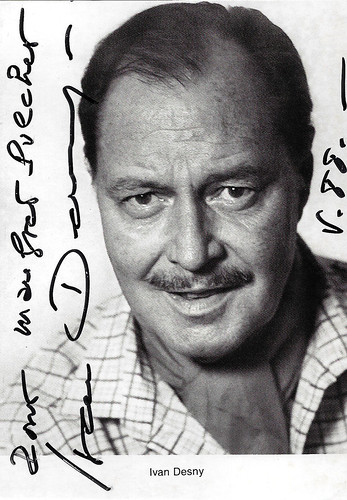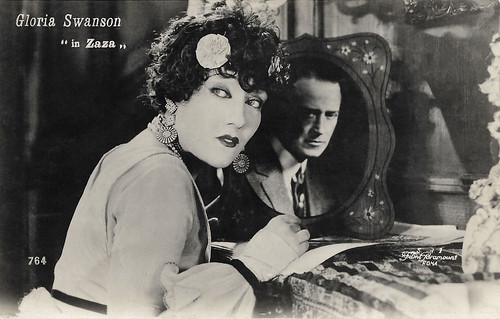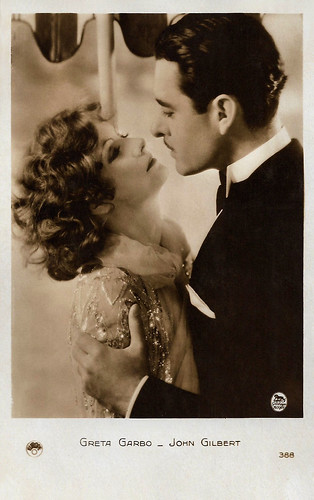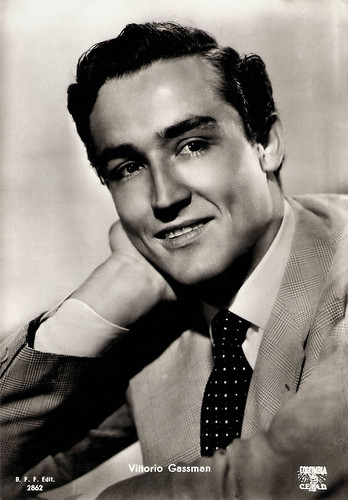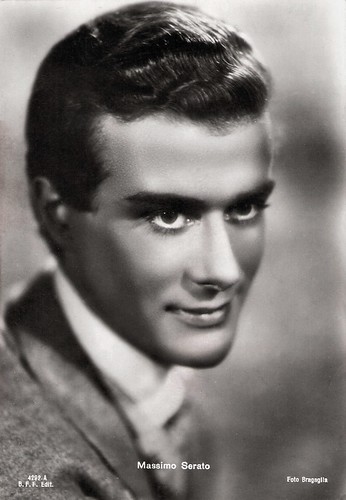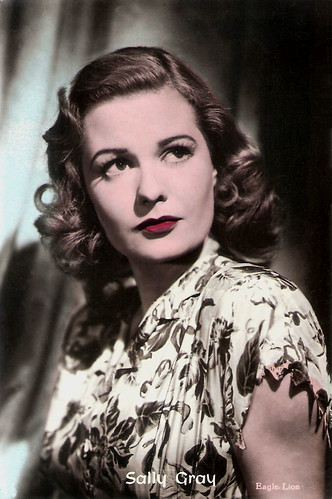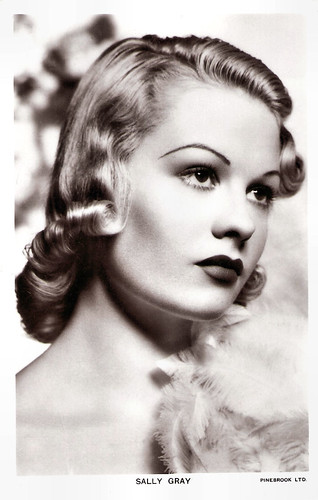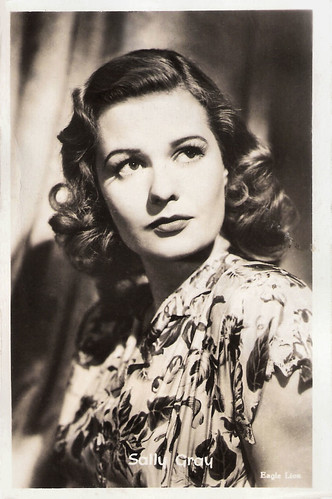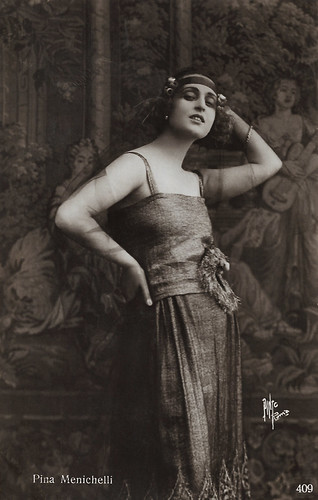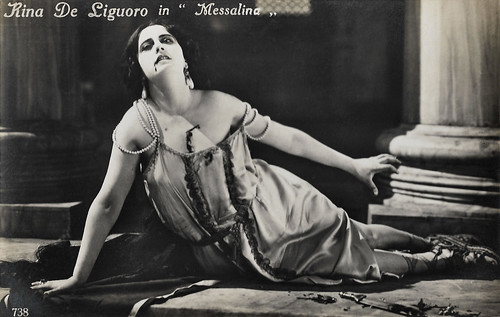Last Sunday, we visited the International Collector's Fair in the city of Utrecht. Twice each year, Ivo and I go hunting in the huge halls of the Fair for new, interesting film star postcards. And once again, we found some rarities and curiosities, which we like to share with you. Last Tuesday, my choice of finds was on show at EFSP, and today follows a post with Ivo's selection of his new treasures.
![Lady Hamilton (1921)]()
Belgian postcard by Société Gama-Film, Brussels. Photo: Richard Oswald Film. Publicity still for Lady Hamilton (Richard Oswald, 1921).
German director Richard Oswald made this silent film version of the dramatic story of Lady Emma Hamilton's rise and fall in European society during the 1700s and early 1800s, including her romantic love story with the British Admiral Lord Nelson. Liane Haid starred as Lady Hamilton, Conrad Veidt played Lord Nelson, and Werner Krauss Lord William Hamilton. The film was based on two novels by Heinrich Vollrath Schumacher.
![I cento giorni (1914)]()
Italian postcard by Danese, Roma, no. 5. Photo: Vere Films. Publicity still for I cento giorni di Napoleone/The Hundred Days of Napoleon (Roberto Danesi, Archita Valente, 1914).
'The Hundred Days' marked the period between Napoleon Bonaparte's return from exile on the island of Elba to Paris on 20 March 1815 and the second restoration of King Louis XVIII on 8 July 1815 (a period of 110 days). Napoleon returned to Paris with the intention of reversing the fate of the conflict against the Russian-Anglo-Prussian coalitioned powers that had defeated him in Leipzig. On 22 June 1815, defeated again in Waterloo, he abdicated definitively. Napoleon died in exile on the isolated Atlantic island of St. Helena, on 5 May 1821.
![Rina De Liguoro in Messalina (1924)]()
Belgian postcard by Anvers Palace. Photo: Rina De Liguoro in Messalina (Enrico Guazzoni, 1924).
Rina De Liguoro (1892-1966) had her breakthrough with the epic Messalina (1924). It was the start of a prolific career in Italian silent cinema in the 1920s with Quo vadis? (1924) and Gli ultimi giorni di Pompeii (1926).
![Josef Mann in Die gezeichneten]()
German postcard by Ross Verlag / W.J. Mörlins, Berlin, no. 437/3, 1919-1924. Photo: Karl Schenker. Publicity still for a stage production of the opera Die Gezeichneten with Josef Mann as Aviano.
Die Gezeichneten (The Branded or The Stigmatized) was an opera in three acts by Franz Schreker with a German-language libretto by the composer. Josef Mann (1883-1921) was an Austrian tenor. During his short life, he was seen as one of the greatest opera stars of his era.
![Alexander Moissi]()
Austrian postcard by Iris-Verlag, no. 328. Photo: Zimler.
Albanian-Austrian Alexander Moissi(1879-1935) was one of the great European stage actors of the early-20th century. The attractive and charismatic women's idol also appeared in several silent and early sound films.
![Brigitte Helm]()
Brigitte Helm. German postcard by Ross Verlag, no. 6032/2, 1931-1932. Photo: Ufa.
![Willy Fritsch in Amphitryon (1935)]()
Willy Fritsch. German postcard by Ross Verlag, no. 9172/3, 1935-1936. Photo: Ufa. Publicity still for Amphitryon/Amphitryon - Happiness from the Clouds (Reinhold Schünzel, 1935).
![Marlene Dietrich]()
Marlene Dietrich. British postcard in Art Photo, no. 34. Photo: Paramount Pictures.
![Michèle Morgan]()
Michèle Morgan. French postcard by Editions P.I., La Garenne-Colombes, no. 133. Photo: GIBE.
![Suzy Carrier]()
Suzy Carrier. French postcard by Editions P.I., Paris, no. 140. Photo: Ch. Vandamme / Les Mirages.
![Fons Exelmans in Wij, heren van Zichem (1969–1972)]()
Belgian postcard by Best, Antwerp. Photo: Humo. Publicity still for the TV series Wij, heren van Zichem/We, Gentlemen of Zichem (Maurits Balfoort, 1969-1972) with Fons Exelmans as Lewie.
Wij, heren van Zichem/We, Gentlemen of Zichem (Maurits Balfoort, 1969-1972) was a hugely popular Flemish TV drama series, a soap avant-la-lettre. The series was produced by the BRT (nowadays the VRT), and elaborates on the adventures of the blond rascal Lewie (a Dutch derivative of Louis), played by Fons Exelmans.
![What's Up Tiger Lily? (1966)]()
British postcard by Brent Walker Film Distributors LTD. Poster for What's Up Tiger Lily? (Woody Allen, Senkichi Taniguchi, 1966).
In Woody Allen's directorial debut, he re-edited the Japanese spy film Kokusai himitsu keisatsu: Kagi no kagi/International Secret Police: Key of Keys (Senkichi Taniguchi, 1965), the fourth installment of five films in the Kokusai himitsu keisatsu series, and completely changed the tone of the film into a comedy about the search for the world's best egg salad recipe.
Source: Verzamelaarsjaarbeurs.

Belgian postcard by Société Gama-Film, Brussels. Photo: Richard Oswald Film. Publicity still for Lady Hamilton (Richard Oswald, 1921).
German director Richard Oswald made this silent film version of the dramatic story of Lady Emma Hamilton's rise and fall in European society during the 1700s and early 1800s, including her romantic love story with the British Admiral Lord Nelson. Liane Haid starred as Lady Hamilton, Conrad Veidt played Lord Nelson, and Werner Krauss Lord William Hamilton. The film was based on two novels by Heinrich Vollrath Schumacher.

Italian postcard by Danese, Roma, no. 5. Photo: Vere Films. Publicity still for I cento giorni di Napoleone/The Hundred Days of Napoleon (Roberto Danesi, Archita Valente, 1914).
'The Hundred Days' marked the period between Napoleon Bonaparte's return from exile on the island of Elba to Paris on 20 March 1815 and the second restoration of King Louis XVIII on 8 July 1815 (a period of 110 days). Napoleon returned to Paris with the intention of reversing the fate of the conflict against the Russian-Anglo-Prussian coalitioned powers that had defeated him in Leipzig. On 22 June 1815, defeated again in Waterloo, he abdicated definitively. Napoleon died in exile on the isolated Atlantic island of St. Helena, on 5 May 1821.

Belgian postcard by Anvers Palace. Photo: Rina De Liguoro in Messalina (Enrico Guazzoni, 1924).
Rina De Liguoro (1892-1966) had her breakthrough with the epic Messalina (1924). It was the start of a prolific career in Italian silent cinema in the 1920s with Quo vadis? (1924) and Gli ultimi giorni di Pompeii (1926).

German postcard by Ross Verlag / W.J. Mörlins, Berlin, no. 437/3, 1919-1924. Photo: Karl Schenker. Publicity still for a stage production of the opera Die Gezeichneten with Josef Mann as Aviano.
Die Gezeichneten (The Branded or The Stigmatized) was an opera in three acts by Franz Schreker with a German-language libretto by the composer. Josef Mann (1883-1921) was an Austrian tenor. During his short life, he was seen as one of the greatest opera stars of his era.

Austrian postcard by Iris-Verlag, no. 328. Photo: Zimler.
Albanian-Austrian Alexander Moissi(1879-1935) was one of the great European stage actors of the early-20th century. The attractive and charismatic women's idol also appeared in several silent and early sound films.

Brigitte Helm. German postcard by Ross Verlag, no. 6032/2, 1931-1932. Photo: Ufa.

Willy Fritsch. German postcard by Ross Verlag, no. 9172/3, 1935-1936. Photo: Ufa. Publicity still for Amphitryon/Amphitryon - Happiness from the Clouds (Reinhold Schünzel, 1935).

Marlene Dietrich. British postcard in Art Photo, no. 34. Photo: Paramount Pictures.

Michèle Morgan. French postcard by Editions P.I., La Garenne-Colombes, no. 133. Photo: GIBE.

Suzy Carrier. French postcard by Editions P.I., Paris, no. 140. Photo: Ch. Vandamme / Les Mirages.

Belgian postcard by Best, Antwerp. Photo: Humo. Publicity still for the TV series Wij, heren van Zichem/We, Gentlemen of Zichem (Maurits Balfoort, 1969-1972) with Fons Exelmans as Lewie.
Wij, heren van Zichem/We, Gentlemen of Zichem (Maurits Balfoort, 1969-1972) was a hugely popular Flemish TV drama series, a soap avant-la-lettre. The series was produced by the BRT (nowadays the VRT), and elaborates on the adventures of the blond rascal Lewie (a Dutch derivative of Louis), played by Fons Exelmans.

British postcard by Brent Walker Film Distributors LTD. Poster for What's Up Tiger Lily? (Woody Allen, Senkichi Taniguchi, 1966).
In Woody Allen's directorial debut, he re-edited the Japanese spy film Kokusai himitsu keisatsu: Kagi no kagi/International Secret Police: Key of Keys (Senkichi Taniguchi, 1965), the fourth installment of five films in the Kokusai himitsu keisatsu series, and completely changed the tone of the film into a comedy about the search for the world's best egg salad recipe.
Source: Verzamelaarsjaarbeurs.











